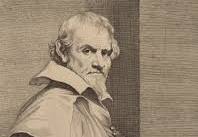Orazio Gentileschi

Personal Details:
Name |
Orazio-Gentileschi |
Place of birth |
Pisa, Italy |
Year of Birth |
1563 |
Year of death |
1639 |
Nationality |
italian |
Paintings |
Judith Slaying Holofernes, The Finding of Moses, David and Bathsheba, and Christ in the House of Martha and Mary |
Orazio Gentileschi (1563-1639) was an Italian painter of the Baroque period. He was born in Pisa and is considered one of the most important painters of the period. He is best known for his religious and mythological paintings, but also painted portraits and landscapes. He was trained in the workshop of his father, the Tuscan painter, Aurelio Lomi.
Gentileschi was heavily influenced by Caravaggio, whose chiaroscuro and use of light and dark was a major influence on his own style. He was also influenced by the Renaissance painter Raphael, whose use of classical compositions and figures he incorporated into his own work. His paintings often focused on strong female figures, emphasizing the power of women in his work.
Gentileschi's most famous works include his painting of the biblical figure Judith Slaying Holofernes and his painting of the Martyrdom of Saint Sebastian. Other notable works by Gentileschi include his depiction of the Lamentation of Christ, The Taking of Christ, and The Annunciation. His works are notable for their intense emotion and use of light and dark to create a sense of drama.
Gentileschi's work was highly influential in the development of the Baroque style. His work was admired by painters such as Rubens and Rembrandt, and his influence can be seen in their works. His style of painting was also an influence on the artists of the Rococo period and his works have been widely copied and reproduced.
Gentileschi's influence on the art world was significant, and he is considered one of the most important painters of the Baroque period. His paintings are still admired today for their drama and emotion, and his use of light and dark to create a sense of atmosphere. He was a pioneer in the use of the chiaroscuro technique, and his work laid the foundation for the development of the Baroque style.



